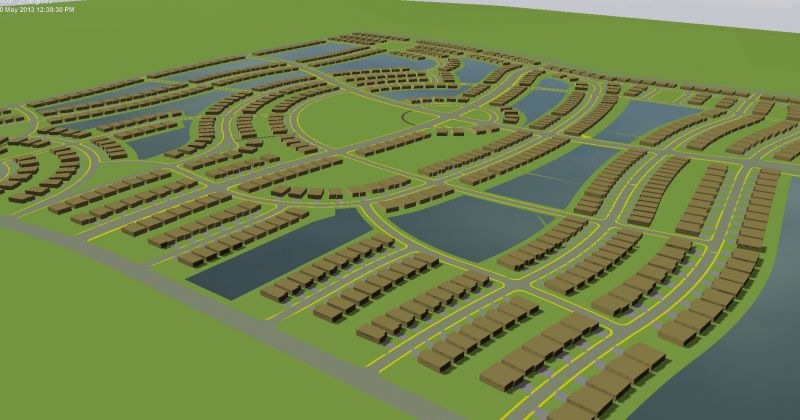Spatial Development And Design Drive Water Use, According To New Study
Published on by Water Network Research, Official research team of The Water Network in Academic
Researchers in North Carolina have found that spatial patterns in landscapes can influence water use. The findings of the study could have large implications for urban sprawl in the arid state of Utah where the population is projected to double by 2050.

Urban Sprawl Planning, Representative Image, Source: Wikimedia Commons, Labeled for Reuse
Most citizens are aware that lawn types or the amount of time spent in the shower influence daily water use. However, lesser known is how spatial patterns of development can also subconsciously influence water use.
“So when I talk about spatial patterns of development I refer to the shapes and forms of urbanized landscapes,” said Georgina Sanchez, a research assistant at the Center for Geospatial Analytics and Ph.D. candidate at North Carolina State University.
In a recent study which looked at growing census tracts across North and South Carolina, researchers found that characteristics like socioeconomic and environmental factors had less of an influence on water use than spatial patterns. In Utah, cities are similarly expanding, so how the state develops may affect future water use.
“We found that compact simple spatial development patterns exhibit lower development-related water use,” Sanchez said.
These results include industrial, commercial and domestic water users and reflect changing development patterns.
Find access to the article ‘Spatial Patterns of Development Drive Water Use’ here.
Find population growth projections for the state of Utah, provided by the Kem C. Gardner Policy Institute at the University of Utah here.
Read full article: UPR
Media
Taxonomy
- Water Footprint
- Integrated Urban Water Management
- Water Footprint Research
- Urban Water
- Consumption
- Infrastructure
- Integrated Infrastructure
- Urban Water Infrastructure
- Infrastructure Management
- Smart Infrastructure Development
- green infrastructure
- urban water security